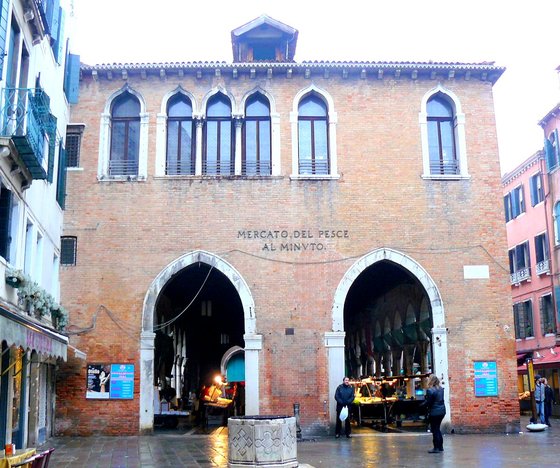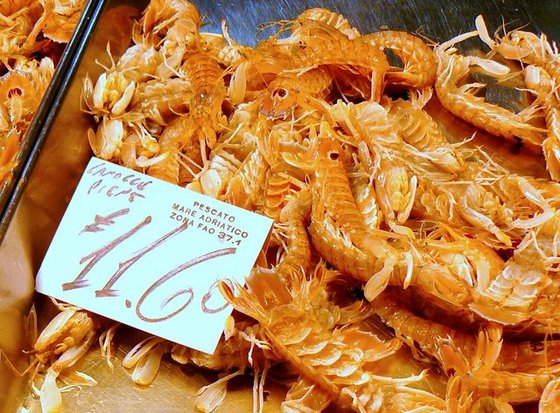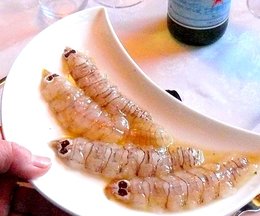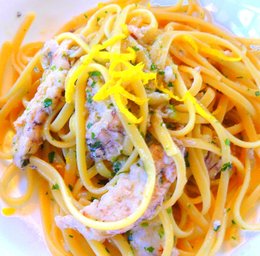VENICE--The tourist axis is between the Rialto and San Marco, but the wealth of the city, fashion windows and tourist galleries aside, is in the vitality of the smaller waterways and the network of campo, calle, fondamento and ponte. Sixty thousand people live on the 117 islands that make up historic Venice, and shop they must for their daily bread, not to mention daily fish.
The fish market, just off the Rialto bridge, has existed for centuries, selling varieties of seafood not seen anywhere else.
They go by many names, these stomapods. Latin, squilla mantis. Everyday Italian, canocchie. Romantically, they're cicala di mare, cicada of the sea. But in Venice, they're known as canoce, (you'll sometimes see it spelled canocce) pronounced ka-NOH-chay, 6- to- 8-inch mantis shrimp, paler and smaller than the giants of the Barrier Reef, fished in cold-weather months in the shallow, sandy lagoons of the northern Adriatic. (Those "eyes" on the tail are decoys, a defense against short-sighted predators.)
A seasonal treat, they're sold live in the fish markets of Venice, marinated briefly in lemon juice and olive oil, then boiled quickly in acidulated water. Housewives and chefs sever the canoce's head with scissors, then snip open the abdominal carapace, extracting the meat from its thumnb-sized fleshy tail to be served as a part of a shellfish platter or stirred into a creamy risotto.
A baby lobster it's not. The flesh is softer, more tender than a langoustine, the flavor more subtle even than farm-raised Gulf shrimp. The shells do not lend themselves to further extraction, be it for sauce or stock. (There's a reason for crab and shrimp boils seasoned with Old Bay: you're adding the flavor.) Yet canoce are prized by the Italians along the north Adriatic coast, from Venice to Trieste, and by the market shoppers of nearby inland towns. In Gorizia, half an hour's drive from the coast, there's a restaurant called Rosenbar that serves canoce with eggy, housemade linquini.




Leave a comment